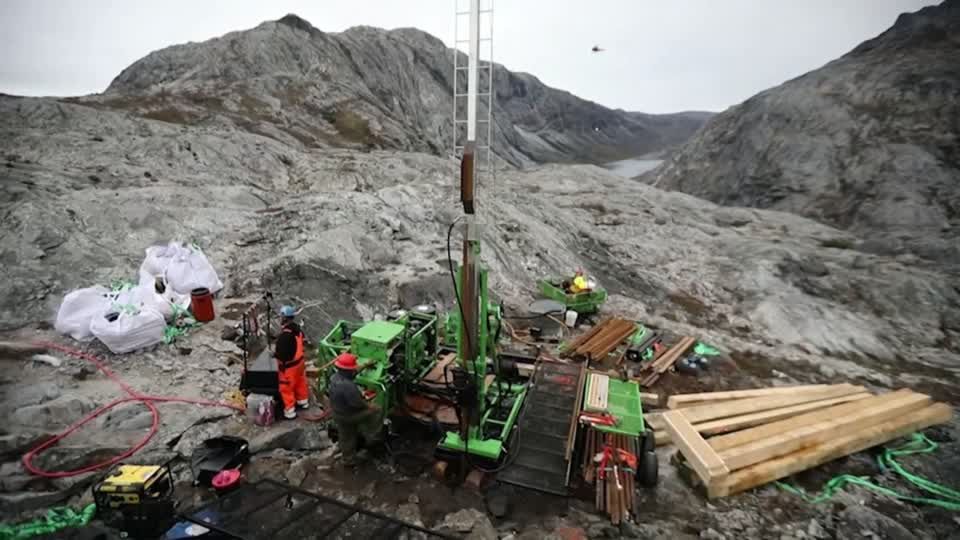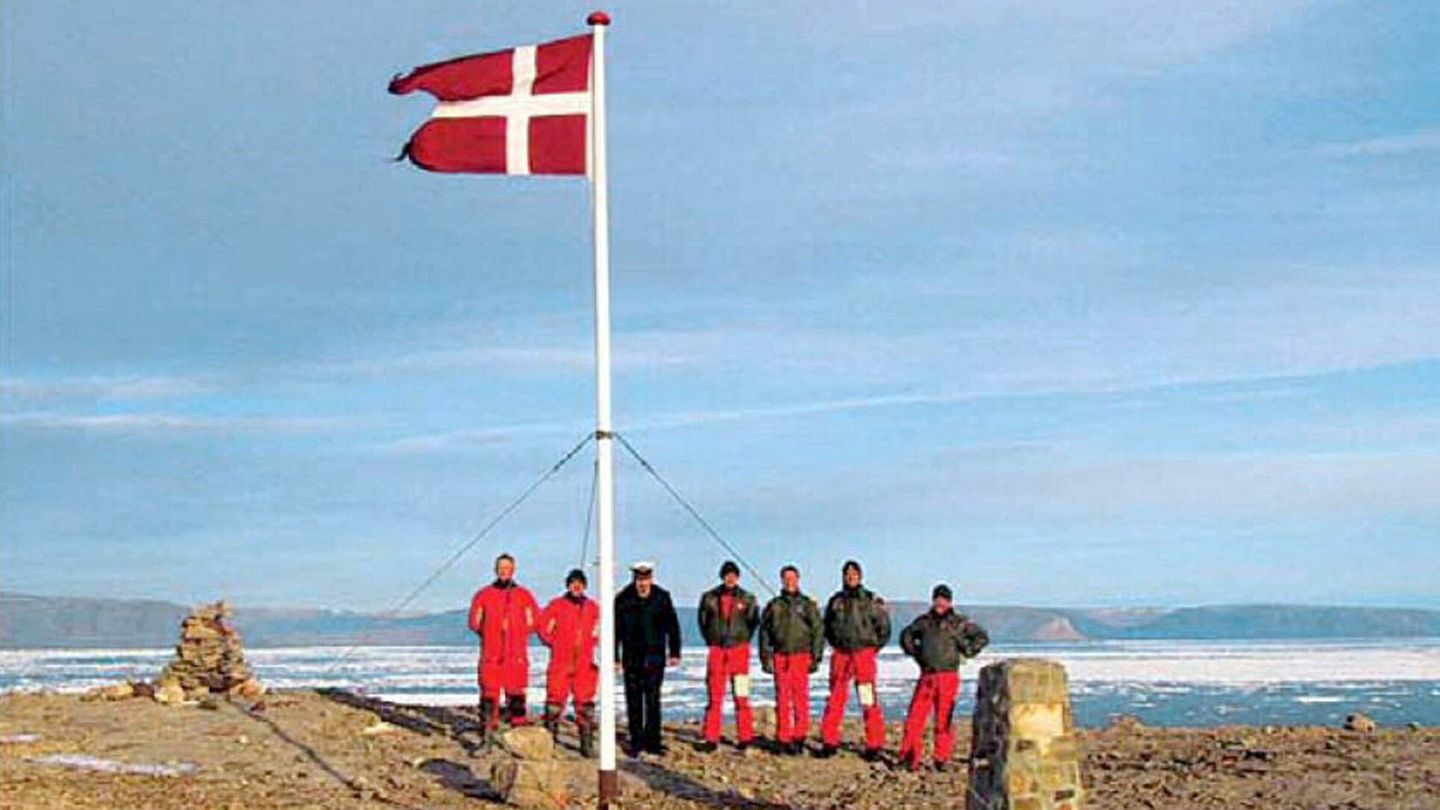For decades, Denmark and Canada have “fought” over a small rocky island. Now the two countries have agreed on the “most peaceful border dispute in the world” – after soldiers from the two countries exchanged liquor for years.
She is made of rock. It has no vegetation. It is just about 1.3 square kilometers in size. She is uninhabited. The rocky island is also in a rather uneconomical area, between northern Canada and northern Greenland in the Nares Strait. And yet it has been a bone of contention between Denmark and Canada for decades – which made headlines worldwide.
But now the disputes over Hans Island – named after the Greenlandic expedition member Hans Hendrik – have finally been settled, as reported by the media.
Canada and Denmark have therefore agreed on a border, after both states have claimed the island for around 50 years. So now the line has been drawn under the conflict. Right through the middle. Hans Island is simply shared between the two countries after years of hoisting their flags on the island and dismantling each other’s.
Denmark gets a large maritime area
However, the new border agreement does not just include an agreement on Hans Island. It is also an agreement for a maritime border of more than 3800 kilometers – making it the longest maritime border in the world, as Danish Foreign Minister Jeppe Kofod has said, according to media reports.
“This is a really good agreement for Greenland and Denmark. It’s been 50 years since the changing Danish governments and Greenland have been grappling with it to find a solution for Hans Island and the border dispute,” he said Foreign Minister quoted. The agreement is important to people on both sides of the border as it is important for fishing, hunting and natural resources.
The fact that Denmark has every reason to be happy should be obvious when looking at the territorial gains: The Danish maritime area in the region is being expanded, roughly by the size of Jutland and the Danish islands of Fyn and Sjælland, as reported by the Danish broadcaster DR.
For Kofod, the agreement also shows that a solution to territorial disputes can be found without conflicts and diplomatic ice ages.
Flag swap and booze for the “enemy”
But how did the border dispute come about? Mutual territorial claims existed early on. Denmark was awarded the island by an international court under the League of Nations. However, this judgment did not make it into the United Nations after the Second World War, as the Danish newspaper writes. Thus, Denmark and Canada could lay claim to the rocky island. But it wasn’t until 1973, when the border between Greenland and Canada was drawn, that it was noticed that there was a small problem called Hans Island – Tartupaluk in Greenlandic. It was then initially agreed that they would not agree.
But it’s not postponed: in 1984, Canadian soldiers went to the island and hoisted their flag. Researchers from Canadian oil company Dome Petroleum also set foot on the island a year earlier, according to the Canadian newspaper. This was followed again by the Danes and Greenlanders, who in turn raised the Danish flag. It went back and forth like that for a few years.

The dispute over Hans Island became known to the whole world because a curious custom had developed between the Danish and Canadian military over the years: the Canadians put a bottle of whiskey with the flag and the Danes a Danish schnapps. Because of these “combat actions”, the conflict between the two countries found its way into the media around the world as the “most peaceful border dispute in the world” or “whisky war”.
Canada’s defense minister causes a scandal
At some point, however, in 2005, then-Canadian Secretary of Defense Bill Graham apparently over-irritated the Danes and Greenlanders when he visited Hans’ Island, removed the Danish flag and took it to Canada, where he gave it to the Danish embassy.
That was the end of the fun and both states agreed in 2008 to find a peaceful solution to the conflict – with success.
But: Has this dispute been worthwhile over the decades? Or: Why did both states get so stuck? Research indicates that there are no raw materials under or around the island.
Hans Island has more symbolic value, says Jeppe Strandsbjerg of the Center for Foreign and Security Policy at Nuuk University and the Center for Arctic Security Studies at the Defense Academy, the broadcaster. “The island has often been highlighted as something ridiculous because we couldn’t agree on this rock.”
However, like Danish Foreign Minister Kofod, Strandsbjerg sees the agreement as a signal that border disputes can be resolved peacefully.
Climate change could fuel the conflict again
But with climate change, it could happen that raw materials such as oil and gas are still exposed. And that’s where the next conflict could threaten, as “Berlingske” writes. Denmark could then again confront Canada with demands for the right to the shelf and seabed. And then there is Russia, which also has a keen interest in the area.
For now, however, the disagreements between Denmark and Canada have been settled. Both countries have yet to ratify the agreement; in Denmark, for example, the parliament still has to agree. When that is over, the representatives of both countries can seal the end of the Hans conflict with whiskey or Danish schnapps.
Source: Stern
David William is a talented author who has made a name for himself in the world of writing. He is a professional author who writes on a wide range of topics, from general interest to opinion news. David is currently working as a writer at 24 hours worlds where he brings his unique perspective and in-depth research to his articles, making them both informative and engaging.




